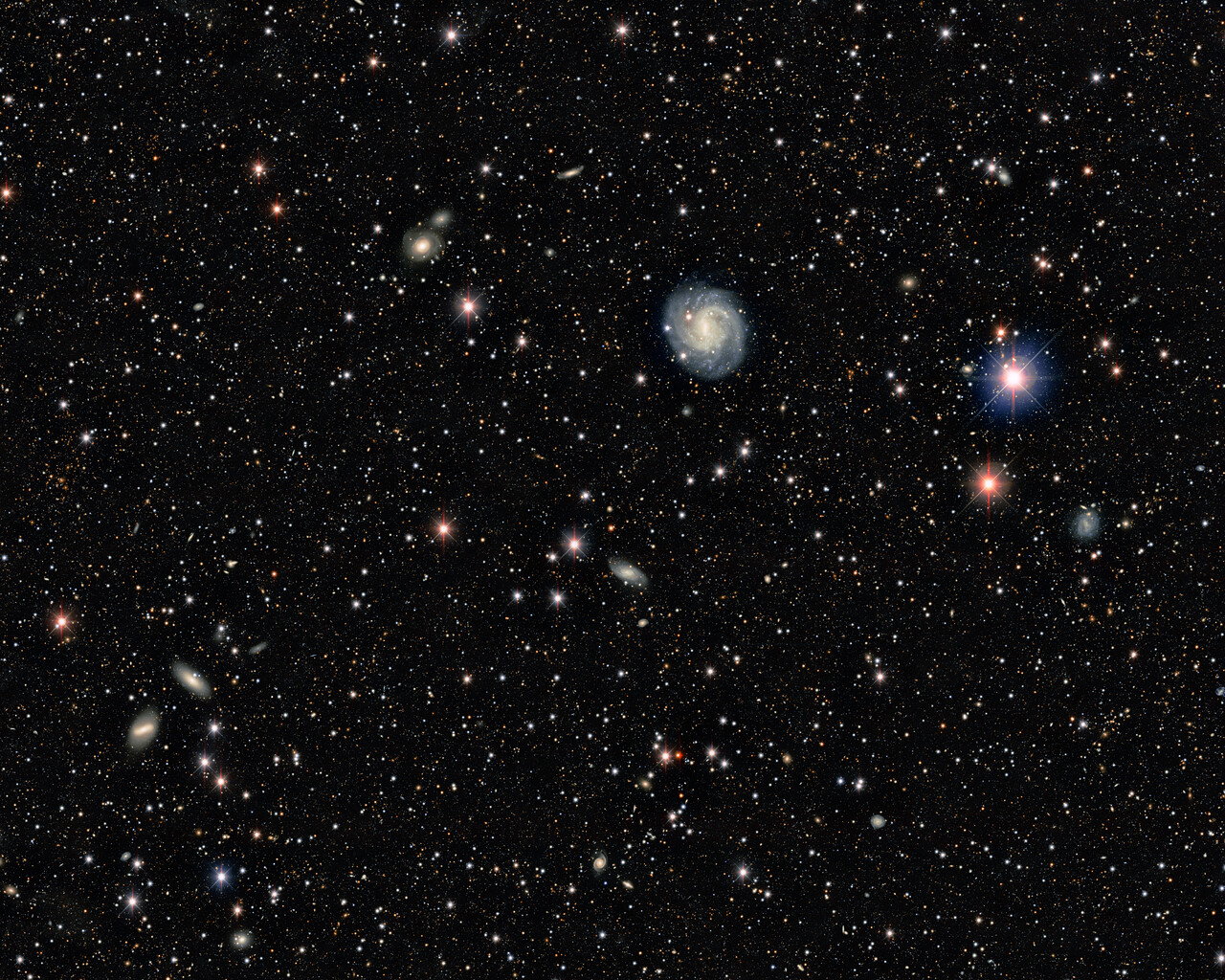Hydra
Origin
Hydra spans from just north of the celestial equator to 35 degrees south of the celestial equator, so all observers can see at least part of the constellation. Hydra is the largest constellation and also the longest, covering 100 degrees from east to west. The Greek constellation of Hydra, The Watersnake, is a reinterpretation of a Babylonian constellation in the framework of Greek mythology. The original constellation depicted the Babylonian Mush-dragon, a dog-headed gigantic serpent with wings and front legs, also called Mushkhushshu. With a raven sitting on its tail tip, this creature was split into two constellations “Corvus” and “Hydra” after the takeover by the Greeks.
Bright Stars
Although Hydra is the largest constellation, it has few bright stars. Alphard (Alpha Hydrae) is the brightest star, shining at magnitude 2.0. Alphard is an orange giant 177 light-years away. Beta Hydrae is a blue-white star shining at magnitude 4.3, 365 light-years from Earth. Gamma Hydrae is a yellow giant of magnitude 3.0, and lies 132 light-years from Earth.


 Photo of the constellation Hydra produced by NOIRLab in collaboration with Eckhard Slawik, a German astrophotographer.
The annotations are from a standardized set of 88 western IAU constellations and stick figures from Sky & Telescope. Please find here a non-annotated version of the image.
Photo of the constellation Hydra produced by NOIRLab in collaboration with Eckhard Slawik, a German astrophotographer.
The annotations are from a standardized set of 88 western IAU constellations and stick figures from Sky & Telescope. Please find here a non-annotated version of the image.
Credit: E. Slawik/NOIRLab/NSF/AURA/M. Zamani
Notable Objects
Hydra contains several notable objects for small telescopes. NGC 3242 is a magnitude-7.5 planetary nebula located 1400 light-years from Earth. It is called the Ghost Of Jupiter as it resembles a dimmer version of the planet. Messier 48 is a magnitude-5.8 open cluster containing about 80 stars located 2500 light-years distant and covering an area slightly larger than the full Moon. Messier 48 is visible to the naked eye from a dark site. Messier 68 is an 8th-magnitude globular cluster 31,000 light-years from Earth. Messier 83 is an 8th-magnitude face-on spiral galaxy known as the Southern Pinwheel.




















